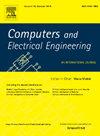SCR-Spectre: Spectre gadget detection method with strengthened context relevance
IF 4
3区 计算机科学
Q1 COMPUTER SCIENCE, HARDWARE & ARCHITECTURE
引用次数: 0
Abstract
Spectre attacks can steal private information via some usual code snippets, and the difficulty in detecting Spectre gadgets is to mine the differences between the same code snippet in different context states. However, existing methods manually construct global behavior features of Spectre gadgets, which cannot capture fine-grained data flow and control flow between codes to distinguish normal code snippets with similar features, resulting in low detection accuracy. Meanwhile, existing methods select the speculative execution path for testing based on the judgment result of conditional instruction, which is prone to cause a path being repeatedly detected under similar conditions, leading to inefficient detection. Therefore, a Spectre gadget detection method with Strengthened Context Relevance (SCR-Spectre) is proposed. SCR-Spectre presents a strengthened context relevance SCR-BERT, which learns fine-grained data flow and control flow by the context relevance, increasing the detection precision. Furthermore, a novel combined dynamic and static testing framework is pioneered, which dynamically screens conditional instruction and statically extracts features of all speculative execution paths of this instruction, avoiding repetitive testing. Experimental results show that SCR-Spectre significantly outperforms state-of-the-art correlation methods. This method fuses fine-grained features between code contexts, strengthening the distinguishability of Spectre gadgets.
求助全文
约1分钟内获得全文
求助全文
来源期刊

Computers & Electrical Engineering
工程技术-工程:电子与电气
CiteScore
9.20
自引率
7.00%
发文量
661
审稿时长
47 days
期刊介绍:
The impact of computers has nowhere been more revolutionary than in electrical engineering. The design, analysis, and operation of electrical and electronic systems are now dominated by computers, a transformation that has been motivated by the natural ease of interface between computers and electrical systems, and the promise of spectacular improvements in speed and efficiency.
Published since 1973, Computers & Electrical Engineering provides rapid publication of topical research into the integration of computer technology and computational techniques with electrical and electronic systems. The journal publishes papers featuring novel implementations of computers and computational techniques in areas like signal and image processing, high-performance computing, parallel processing, and communications. Special attention will be paid to papers describing innovative architectures, algorithms, and software tools.
 求助内容:
求助内容: 应助结果提醒方式:
应助结果提醒方式:


